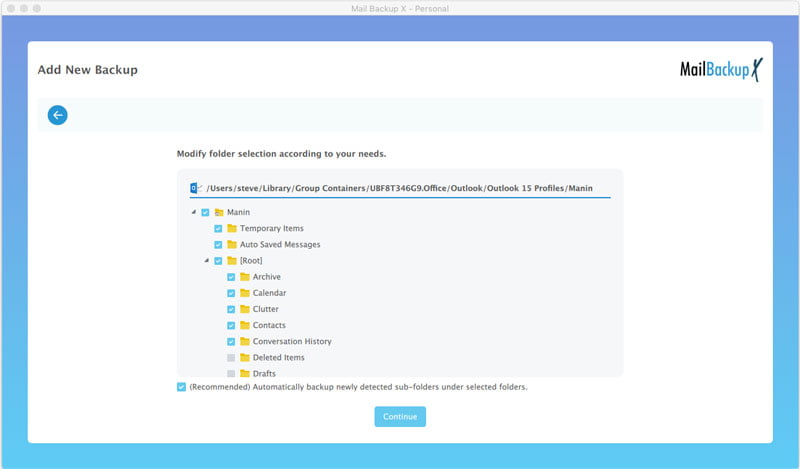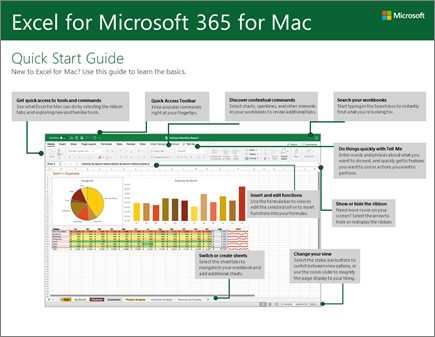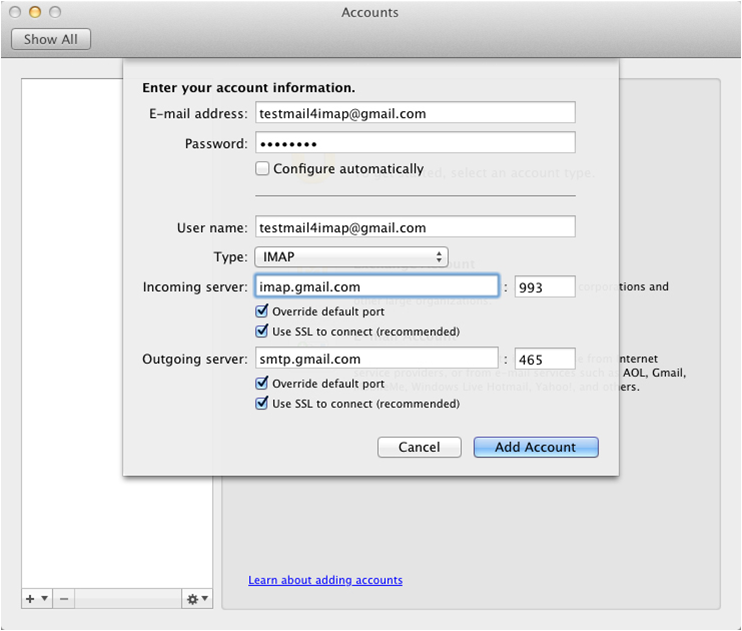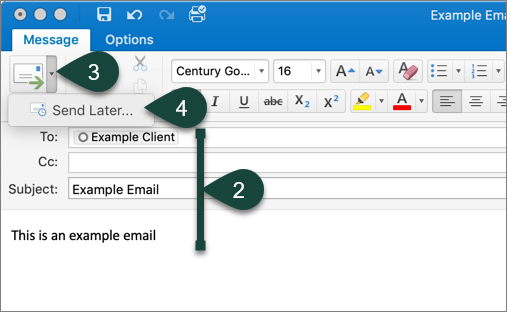- Instruction Manual For Office Outlook On Mac Pro 12.9
- Instruction Manual For Office Outlook On Mac Pro 2017
- Instruction Manual For Office Outlook On Mac Problems
- Instruction Manual For Office Outlook On Mac Pro 2020
Microsoft is launching a new version of Outlook for Mac in October. The email app has been completely redesigned, with some new features that should speed up mail sync, search, and more. Follow our step-by-step guide to setting up an Office 365 POP email account in Outlook 2011-2016 Mac. Receive your btconnect emails directly to your Mac.

Applies to:Office for Mac, Office 2019 for Mac
There are two basic ways that you, as an admin, can deploy Office for Mac to users in your organization:
Provide your users with the installer package file, and have them install Office for Mac for themselves
Download the installer package file to your local network, and then use your software distribution tools to deploy Office for Mac to your users
If you have an Office 365 (or Microsoft 365) plan, you can provide your users with instructions on how to download and install Office for Mac for themselves. To install Office for Mac, a user has to be administrator on the Mac or know an administrator account name and password.
But, if you deploy Office for Mac for your users, you have more control over the deployment, including which users get Office for Mac and when. To plan your deployment, review the following information.
Download Office for Mac to your local network
The easiest way to download Office for Mac, and ensure you're always getting the most current version and build, is to download directly from the Office Content Delivery Network (CDN) on the internet. Here are the links to the installer packages for the Office suite, which contains all the applications:
- Office for Mac (for Office 365 or Microsoft 365 plans)
- Office 2019 for Mac (for retail or volume licensed versions)
Important
Support for Office 2016 for Mac ended on October 13, 2020. For more information, see End of support for Office 2016 for Mac.
Here is some additional information about installer packages:
- Installer and update packages for individual applications are also available on the Office CDN. For links to those packages, see Most current packages for Office for Mac.
- The same installer package is used for Office for Mac and Office 2019 for Mac. How you activate the product determines whether you get the features for Office for Mac or the features for Office 2019 for Mac.
- Unlike Office 2016 for Mac, the installer package for Office 2019 for Mac isn't available on the Volume Licensing Service Center (VLSC).
Instruction Manual For Office Outlook On Mac Pro 12.9
Deploy Office for Mac to users in your organization
Office for Mac uses the Apple Installer technology for installation. That means you can use the software distribution tools that you normally use to deploy software to Mac users. Some of the most common tools are Jamf Pro, Munki, and AutoPkg. You can also use Apple Remote Desktop and AppleScript.
Important

There are changes in Office for Mac to improve security, including implementing Apple app sandboxing guidelines. These changes mean that you can't customize the app bundle before or after you deploy Office. Don't add, change, or remove files in an app bundle. For example, even if you don't need the French language resource files for Excel, don't delete them. This change prevents Excel from starting. Even though you can't customize app bundles, you can configure preferences for each app.
Instruction Manual For Office Outlook On Mac Pro 2017
Additional deployment information for Office for Mac
Whichever deployment method you decide to use, the following information can help you plan your Office for Mac deployment.

What's new: Before you deploy, review the information about what's new for admins in Office for Mac. This article includes information about system requirements, language support, and new features.
Side-by-side installation: You can't have Office 2016 for Mac, which is no longer supported, and Office 2019 for Mac installed on the same computer. Also, you can't have Office for Mac (from an Office 365 or Microsoft 365 plan) along with either Office 2016 for Mac or Office 2019 for Mac (both of which are one-time purchase versions) installed on the same computer.
Deploying individual apps: Installer package files for individual applications are available on the Office Content Delivery Network (CDN). For links to those files, see Most current packages for Office for Mac.
Activation: To use Office for Mac, it needs to be activated. Before you deploy, review the information about how activation works in Office for Mac.
Uninstalling: If you need to uninstall Office for Mac, you can follow these steps to completely remove Office for Mac. Unfortunately, there is no program to uninstall Office for Mac automatically.
Version numbers Version numbers of 16.17 or higher for retail or volume licensed installs indicate you have Office 2019 for Mac. Office 2016 for Mac, which is no longer supported, had version numbers of 16.16 or lower. Since the 'major' version (16) hasn't changed between Office 2016 for Mac and Office 2019 for Mac, application settings, including policies, preferences, and preference domains are similar between the two versions. Also, add-ins and other extensibility solutions that were compatible with Office 2016 for Mac will most likely be compatible with Office 2019 for Mac or will require minimal testing.
Upgrade to Office for Mac or to Office 2019 for Mac

Upgrade to Office for Mac (subscription version): If you're a volume licensed customer of Office 2016 for Mac or Office 2019 for Mac, you can upgrade to Office for Mac (available with certain Office 365 or Microsoft 365 plans) without uninstalling your current version. First, download and run the license removal tool. Second, launch Microsoft AutoUpdate (MAU) and install the latest Office updates. Finally, launch any Office app and sign in with your Office 365 or Microsoft 365 account. For a demo of these steps, and an example of how to automate this process with Jamf Pro, watch this video.
Upgrade to Office 2019 for Mac: If you're a volume licensed customer, you can upgrade to Office 2019 for Mac without uninstalling Office 2016 for Mac. First, you need to download the 2019 version of the Volume License (VL) Serializer from the Volume Licensing Service Center (VLSC). Second, download the latest version of Office 2019 for Mac. Then, deploy both the Volume License (VL) Serializer and Office 2019 for Mac to each device running Office 2016 for Mac. There is no need to remove Office 2016 for Mac first.
Related articles
Last updated on October 1st, 2018 at 07:01 am

Microsoft Outlook is a professional email service provider consists of different features used in our daily office tools. MS Outlook is by default available in Windows PC but the thing is if you need this on your Macbook then you have to install it manually. Here in this tutorial, you can see the best way to install Outlook on your Macbook.
The steps for both MacBook Air and MacBook Pro are same. The reason behind the popularity of MS Outlook among the professional is its services. On a single place, Outlook offers Calendar, OneDrive, Word, Excel, PowerPoint, and other office utilities. For Mac Outlook is not free so you have to purchase it from the official website of Microsoft. But you can try it for one-month absolutely free. Check out how.
Instruction Manual For Office Outlook On Mac Problems
How to Install outlook on Mac?
Install Outlook 365 with these easy steps below.
- Go to official Microsoft Store and search for Outlook 365 for Mac. The latest available is Outlook 2016. Then click on Shop Now.
- A new window will open which will display options for buying Outlook. The first two will be the paid options and the third will be the free trial option. Click on the “try it free for one month”.
- Next click on the “Try 1-month free” icon and continue.
- In the next step, you will need to log in with your Microsoft account or create a fresh one if you do not have one already.
Once you are done with these steps, you can install Outlook on your Mac. If you like its services then after 1-month of free service you have to purchase its subscription. There are some other alternatives that you try which cost you nothing.
Free alternatives to Microsoft Outlook for Mac
- MacOS mail
Access all your email accounts in one place using MacOS mail. This is by default present in all Macbook and is full of features that you require. The best thing is the User Interface is very friendly and easy to navigate every feature.
Instruction Manual For Office Outlook On Mac Pro 2020
- Canary Mail
Canary Mail is another best option that offers you great security features. You and receiver of the email can see the mail you have sent not even your provider. So you must try this for free.
There are many other alternatives that we suppose to make another topic about this. I hope the information provided about How to Install Outlook on Mac for Free? is useful. Don’t miss our latest tech tutorial and online deals. Follow us on Facebook, Twitter or Google+
